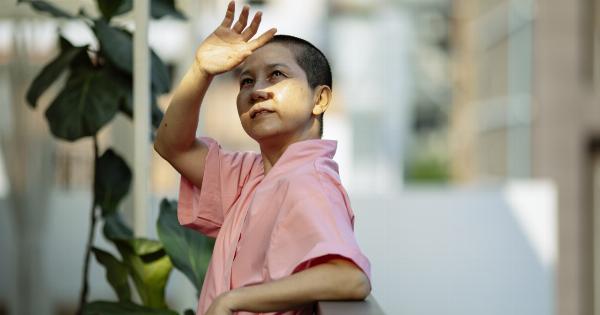When it comes to breast cancer, it is important to understand that no breast type is completely immune to the disease. Breast cancer can affect women of all ages, races, and body types.
However, certain breast types may have a higher risk of developing breast cancer. In this article, we will explore the different breast types and their potential susceptibility to breast cancer.
The Importance of Breast Self-Exams
Before delving into the specific breast types, it is crucial to emphasize the importance of regular breast self-exams.
Regardless of breast type, all individuals should perform monthly self-examinations to familiarize themselves with their breasts’ normal appearance and detect any changes or abnormalities early on.
Dense Breasts
One breast type that has been identified as having an increased risk of breast cancer is dense breasts. Dense breasts contain more glandular and fibrous tissue than fatty tissue, making it more challenging to detect abnormalities on a mammogram.
This increased density can mask the presence of tumors, making it important for individuals with dense breasts to be vigilant about self-examinations and consider additional screening methods.
Fatty Breasts
On the other end of the spectrum, fatty breasts, which have more adipose tissue, are associated with a reduced risk of breast cancer. Adipose tissue is less hormonally active compared to glandular tissue, which may contribute to a lower risk.
However, it is important to note that even individuals with fatty breasts are not completely immune to breast cancer.
Lumpy Breasts
Lumpy or fibrocystic breasts are a common breast type characterized by the presence of non-cancerous lumps or cysts. Having lumpy breasts does not increase the risk of breast cancer directly.
However, it can make it more challenging to differentiate between benign lumps and potentially cancerous growths. Regular self-examinations and routine screenings ensure early detection and appropriate medical intervention if necessary.
Large Breasts
Large breasts, also referred to as macromastia, may be associated with a slightly increased risk of breast cancer.
The heightened risk may be attributed to the larger volume of breast tissue, making it more difficult to detect changes during self-examinations or mammograms. Individuals with large breasts should consult their healthcare provider to determine if additional imaging techniques, such as breast MRI, may be beneficial.
Small Breasts
While individuals with small breasts may have less breast tissue, it does not mean they are less prone to breast cancer. Breast cancer can develop in any amount of breast tissue, and size alone does not determine an individual’s risk.
Regular self-examinations and clinical screenings are equally important for individuals with small breasts.
Asymmetrical Breasts
Many women have naturally asymmetrical breasts, with one breast being slightly larger or a different shape than the other. Having asymmetrical breasts does not inherently increase the risk of breast cancer.
However, it is essential to notice any changes in the size, shape, or density of either breast, as these changes could indicate an underlying issue that requires medical attention.
Male Breasts
Although breast cancer is more commonly associated with females, it can also affect males. Male breast tissue is typically less developed than female breast tissue, making it easier to detect changes or abnormalities.
However, it is essential for males to be aware of any breast changes and consult a healthcare professional if any concerns arise.
Implants and Breast Cancer Risk
Breast implants, whether silicone or saline, do not increase the risk of breast cancer. However, it is important to note that implants can make it more challenging to detect breast abnormalities during self-examinations and mammograms.
Individuals with breast implants are encouraged to inform their radiologist so that appropriate imaging techniques can be used to ensure accurate results.
Breastfeeding and Breast Cancer
Breastfeeding has been found to have a protective effect against breast cancer. Regardless of breast type, women who breastfeed their children for an extended period have a reduced risk of developing breast cancer.
This could be attributed to the hormonal changes and breast tissue transformation that occur during lactation.
Conclusion
In conclusion, breast cancer can affect individuals of all breast types.
While certain breast characteristics, such as dense breasts or larger breast size, may slightly increase the risk, it is essential for everyone to prioritize regular self-examinations and clinical screenings. Early detection through self-awareness and appropriate medical intervention remain crucial in the fight against breast cancer.


















